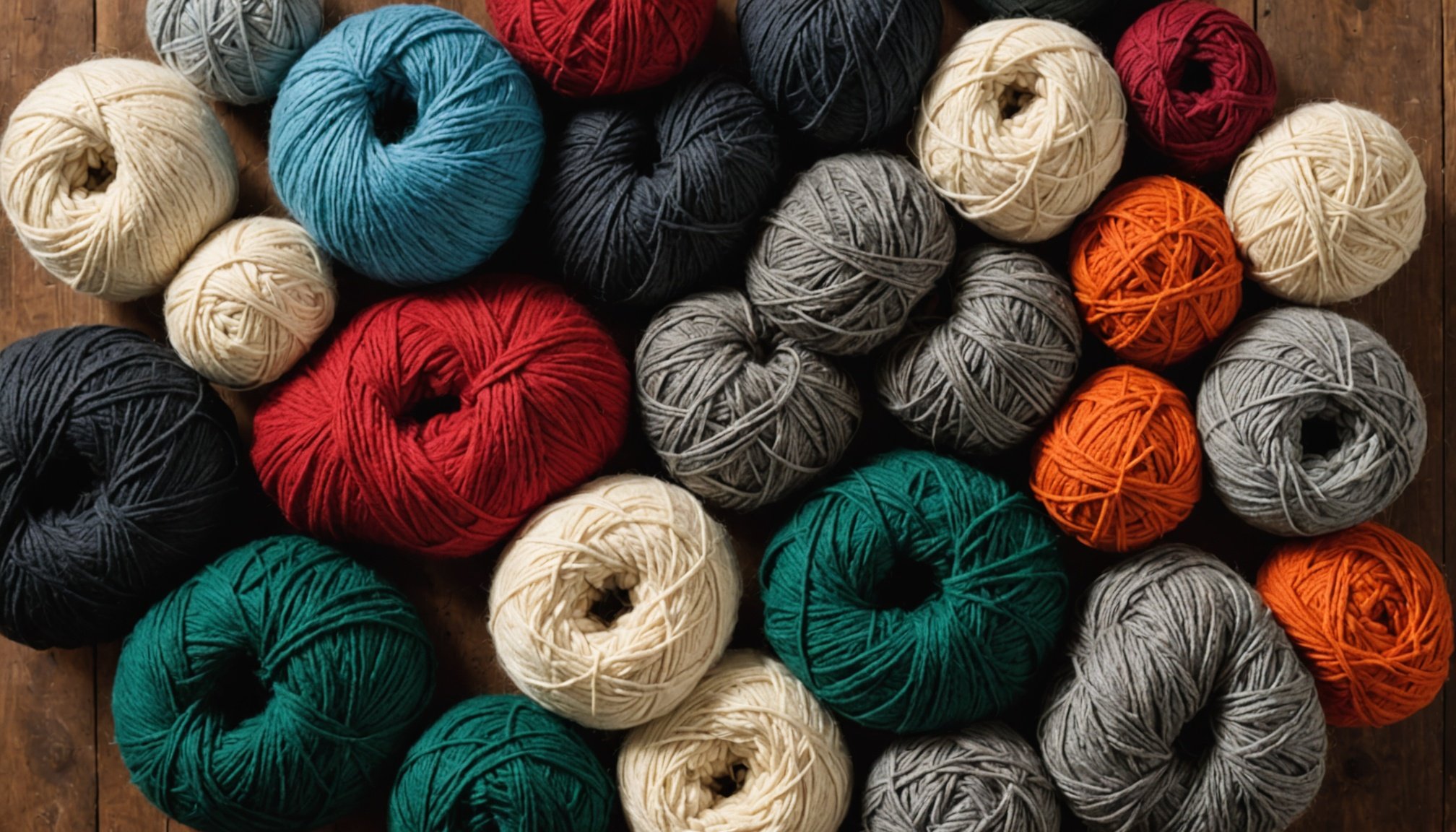Overview of Wool Garments Care
When it comes to wool garment maintenance, understanding the unique properties of wool is crucial. Wool fibers are resilient yet delicate, possessing natural elasticity and moisture-wicking abilities. However, these qualities demand careful attention for effective wool quality preservation.
Proper maintenance has a significant impact on the longevity and appearance of wool garments. With appropriate care, wool can remain vibrant and avoid the dreaded pilling and discolouration. This ensures that the natural warmth and softness are preserved over the years, offering both comfort and durability.
Also to see : The definitive handbook for selecting the best eco-conscious winter coats in the uk
There are several common misconceptions about caring for wool garments that can lead to unintentional damage. A widespread belief is that wool requires constant washing to maintain cleanliness. In truth, wool’s natural resistance to odours means it often needs less frequent washing than other fibers. Another myth is that wool garments should never be hung, while in reality, using rounded hangers can help maintain their shape between wears.
Importance of wool care lies in balancing these unique characteristics and understanding how to keep wool garments in immaculate condition, ultimately maximising their lifespan. Exploring best practices in wool care can ensure your garments continue to look and feel luxurious.
Have you seen this : Elevate Your High Street Fashion to Shine at UK Music Festivals
Washing Wool Garments
Washing wool garments requires careful techniques to preserve their quality. Understanding the right washing techniques for wool is essential. Begin by recognising that hand washing is often the gentlest method for woolen items. Use lukewarm water and a mild wool-specific detergent. Gently swish the garment without wringing to avoid stretching the fibers.
Hand Washing Techniques
For effective hand washing of wool, immerse the garment in a water and detergent mixture. Let it soak briefly and then softly agitate the water to clean. Rinse well with cool water until all soap is removed. Press the wool garment gently between towels to extract excess water.
Machine Washing Guidelines
If opting for machine washing, ensure machine settings that protect wool fibers are employed. Select a delicate cycle with cold water. Placing garments in a mesh bag can further shield against friction. Avoid tumble drying as it risks distortion.
Choosing Appropriate Detergents
When selecting detergents, proper detergents for wool are designed to preserve integrity. Look for labels indicating suitability for wool, which often contain lanolin or other fibres-softening agents. Avoid harsh chemicals that can degrade the material over time.
Drying Wool Garments
Drying wool garments requires careful attention to maintain their quality. Drying techniques for wool are important to prevent shrinkage and preserve texture. After washing, gently squeeze out excess water without wringing.
Air Drying Methods
Air drying is a highly recommended technique. Lay the garment flat on a clean towel, then gently roll it to absorb moisture. Avoid hanging, as this may stretch the fabric.
Techniques to Avoid Shrinkage
To prevent shrinkage, maintain a consistent room temperature and avoid heat sources. Direct sunlight and radiators should be kept away from the drying area.
Use of Drying Racks and Towels
Utilising drying racks and towels can further assist in the drying process. Mesh drying racks allow air circulation, promoting even drying. Lay wool garments on a fresh towel, reshaping them to their original dimensions. Refresh the towel if it becomes saturated.
Following proper drying methods ensures wool garments retain their shape, size, and quality. These techniques help avoid common pitfalls such as shrinkage and distortion, prolonging the garment’s lifespan and maintaining its softness and elasticity.
Storing Wool Garments
Ensuring the longevity of wool garments starts with effective wool storage tips. Careful seasonal storage preserves quality and appearance. Wool’s natural fibers require specific conditions to maintain their integrity over time.
Seasonal Care for Wool Garments
Seasonal storage is crucial for maintaining wool quality during storage. Before storing, ensure garments are clean and dry. Stains and moisture can invite moths and mould, damaging fibers. Gently fold items and store them flat to prevent distortion.
Ideal Storage Conditions
Maintaining wool quality during storage involves creating the right environment. A cool, dry, and dark place is ideal, preventing exposure to light and fluctuation in temperature that could weaken fibers. Opt for breathable containers or cotton garment bags to avoid musty smells.
Using Proper Storage Materials
Choosing the right materials is key to seasonal storage for wool. Acid-free tissue paper can help maintain shape and prevent creases. Cedar blocks or lavender sachets naturally repel insects while adding a pleasant scent. Avoid using plastic bags, as they trap moisture.
These wool storage tips ensure your garments remain in prime condition, ready for wear when the seasons change. By following these guidelines, you can effectively protect your woolen investments.
Repairing Wool Garments
Preserving the allure of wool garments requires adept handling of repair techniques for wool. Over time, these cherished items may develop minor damages needing attention to upkeep their elegance.
Common Repair Issues
Typical repair needs in wool garments include holes, loose threads, and minor abrasions. Resolving these promptly ensures wool garment restoration. Moths often target wool, creating telltale holes. Catching and fixing these early prevents further damage.
DIY Repair Tips
For minor issues, such as small holes or loose threads, DIY methods can be effective. Sewing using invisible thread or a needle-felting technique helps blend repairs seamlessly into the garment. When opting for these methods, always use materials compatible with wool to maintain wool’s quality.
When to Seek Professional Help
Some damages demand professional intervention for reliable fixing. Extensive tears, intricate knit patterns, or discolouration issues require expert handling to ensure wool garment restoration without compromising fabric integrity. Professionals employ specialised tools and techniques, ensuring results that blend impeccably with the garment’s original structure. Seeking professional guidance protects your investment in wool’s timeless appeal.
Understanding these repair techniques and knowing when to handle issues independently versus seeking professional help can prolong the life and beauty of your wool garments.
Common Myths About Wool Care
Caring for wool garments involves navigating a labyrinth of wool care myths. Misconceptions can lead to improper care techniques that may damage these delicate fibers. Let’s explore and dispel some common misunderstandings surrounding wool.
Debunking Popular Beliefs
One of the widespread wool care myths is that wool shrinks every time it’s washed. When washed correctly, wool maintains its size and shape. Fears around constant shrinking are often linked to using the wrong water temperatures or agitation.
Clarifying Wool Fabric Facts
Many believe wool is too delicate to handle everyday wear. However, wool is more resilient than perceived, boasting natural stain-resistance and odour-repelling abilities. This makes wool far more capable of frequent and varied use than typically thought.
Expert Insights on Wool Care Myths
Textile experts often remind us that wool’s need for dry cleaning isn’t as frequent as assumed. Wool’s self-cleaning properties imply less frequent trips to the dry cleaner. These insights help to adjust our understanding and shift habits toward wool garment-friendly practices. By debunking these myths, you can care for your wool garments with confidence and expertise.
FAQs About Caring for Wool Garments
Navigating wool care questions can be puzzling, yet vital for maintaining garment quality. Let’s explore frequently asked questions and expert tips on wool maintenance to clear any doubts you might have.
Frequently Asked Questions Overview
- Can wool garments be washed in a machine?
- Yes, use wool wash methods such as a delicate cycle with cold water and protective mesh bags.
- How often should I clean my wool garments?
- Wool’s natural odour resistance allows for less frequent washing compared to other fabrics.
Expert Answers to Common Concerns
-
Why does my wool garment stretch when hung?
Wool’s elasticity responds best to being stored flat as part of wool garment maintenance. Rounded hangers can help maintain shape if hanging is necessary. -
Is it okay to use regular detergent for wool items?
Regular detergents may contain harsh chemicals, risking fibre degeneration. Opt for proper detergents for wool with special lanolin content to ensure longevity.
Additional Resources for Wool Care
For further details on wool quality preservation techniques and expert wool garment maintenance strategies, consult dedicated textile care guides, often available through manufacturers’ websites or speciality cleaning experts.











